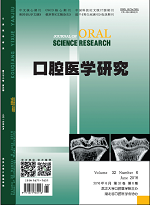|
|
Research on the Periodontal Treatment Timing for Combined Periodontal-endodontic Lesions
ZHOU Wei, CHEN Bin, ZHAO Jun-jie, LI Hou-xuan, YAN Fu-hua.
2016, 32(6):
601-604.
DOI: 10.13701/j.cnki.kqyxyj.2016.06.012
Objective: To explore the periodontal treatment timing for combined periodontal-endodontic lesions. Methods: One hundred and thirty-eight patients with combined periodontal-endodontic lesions, from October 2013 to October 2015 in Nanjing Stomatological Hospital, were randomly divided into control group (group A) and the test group (group B). The involved teeth were treated with root canal therapy (RCT) and full mouth supragingival scaling, and then the subgingival scaling and root planning (SRP) were performed 1 week (group A) or 4-6 weeks (group B) later. SBI, PD, AL, PLI, and TM were recorded at baseline, 2 months, 3 months, 6 months and 12 months for statistical analysis. Results: All the indices observed were not significantly different between group A and group B at baseline before RCT. The differences of SBI, PD, TM were statistically significant between two groups before periodontal treatment (P<0.05). When compared with pre-treatment, the difference of the parameters of baseline and of 2 months after periodontal treatment was statistically significant in both groups. However, there were no statistically significant of the parameters at maintenance periods of 3 months, 6 months, and 12 months when compared to 2 months after treatment. There was no significant difference between two groups at any time point (P<0.05). Conclusion: SRP was suggested to perform 1 week after RCT.
References |
Related Articles |
Metrics
|

